Before traveling, I made several tough decisions about how I wanted to approach reading on the road.
To me, travel offers a unique opportunity to read material that everyday life can render too challenging. After many long days spent adulting in San Francisco, I often lacked the energy and focus to dig into Dickens or wade through Whitman. And I’ve always found rich literary experiences to be more engaging in the whitenoise silences of an airplane or outdoor cafe, besides.
So first, before I departed I decided to read, to the best of my ability, only top-shelf material, classics, and standout books in their genres. If I’m mindfully exposing myself to the best the world has to offer, writing in its various forms should be part of that, though I intend to emphasize classic fiction.
I’m also aware that my outstanding-but-also-expensive education (thanks dad!!!) left holes in my literary map. This time seems good as any to fill them in. Especially since I also appear to be getting quite serious about this whole “me write pretty words good” thing!
Also, contrary to how I might seem – and what my grades report – I wasn’t always the best student. (Sorry dad!!!) I skipped many books in my high school and college literature classes. I understand why I did it, and it all worked out. But I still regret that choice. So I also see this moment as a chance to right some of those wrongs, and to bring my (mostly) adult awareness and understanding to some of the great books I missed, and hopefully savor them more than I would have as a kid.
Second, I decided to read only one book at a time. Like many people, I easily fall into the trap of starting piles of books, and finishing none of them. So my inner dialogue prior to reading at home tended to go like this:
“How would I characterize my mood at the moment? Do I feel like reading this or that? That book would be good, but I’m behind on the other. Oh, I also haven’t started that new one that so-and-so recommended!”
For me, inevitably such debates led to analysis paralysis, a road further down which finds its terminus at Facebook Station. All aboard!
By reading just one book at a time and not starting another until the current one is completed (or abandoned), I made sure that I would finish the books I selected.
This self-hacking strategy seems to have worked, as I’ve finished 6 books in less than 4 months, and am a good way through my 7th.
Third and finally, to the absolute best of my ability, I decided to read paper books only. Though this exposes me to the vagaries of hostel book exchanges, which can be both enlightening and depressing in their variety – “Oh look, The Hunger Games in 4 languages!” – I felt that the chance of being surprised outweighed any literary goals I might have for myself. This also mirrors my philosophy on travel and, as I’ll share in a moment, I’ve been both punished and richly rewarded for this decision. (In books, I mean, not travel.)
Why not a Kindle? Well, years ago I owned a Kindle and made a sincere effort to read several books of varying degrees of quality, ranging from Game of Thrones Book 4: A Feast for Crows – which, like many of the characters in the series, I barely survived – to Jared Diamond’s Pulitzer Prize-winning classic Guns, Germs, and Steel.
Though I finished several books on my Kindle, I never found the experience to be quite as satisfying as my prior time spent reading. The difference owes, I think, to a quirk of the English language in this regard:
A “book” is not the same thing as a “book.”
When your one hand is done clapping at the Zen wisdom of that profound statement, I’ll explain what I mean.
In the classic sense of the word, a “book” is a physical object whose presence can be detected by our five senses: the sight of the dust jacket and typeface; the smell of pages old and new; the sound of those pages turning; its texture and weight; and more I suppose… if you’re hungry enough?
In the contemporary sense of the word, specifically relating to the Kindle and other e-book readers, a “book” is also taken to mean the informational content of that aforementioned physical object. In this curious way, a physical “book” also houses a “book.”
But the information is not the same thing as the physical object, hence what I mean by a “book” not being a “book.” (And vice versa!) As we all experience in many ways during this digitally-mediated era, removing the information from the physical object inarguably leads to a loss of the sensuality of the experience. Some people find this loss more meaningful than others.
With regard to the experience of reading, I am one of those people, I have discovered. Reading, for me, is as much about the physical experience of the thing as it is about the information within that thing.
In the same way, as a 16-year DJ I value maybe two of my most-played music files in the way I treasure the stacks of my prized vinyl, though I’ve been playing each format for about the same length of time. And my dog-eared, time-worn, 20-year-old copy of Carl Sagan’s extraordinary and little-known The Demon-Haunted World will always be worth more to me as the object that cracked open the coconut of my empty college-aged head than it ever would as an a .epub.
So rather than packing a Kindle – and also worrying about yet another wealth-advertising, damage-prone, dead-battery screen – I decided to stick with physical books.
Yes it’ll make carrying that copy of War and Peace in my trusty leather man-purse a bit more difficult, if not impossible. Yes, it also reduces my options from “Almost Any Book Ever Written, Ever” to “What I Can Scavenge In the Hostel or At The One Bookstore In All of Outer Mongolia.” But that’s part of the fun, right?
Plus, given the quizzical-yet-admiring way that people look at me when I’m sitting at a restaurant staring at an actual book instead of my phone, I enjoy proving to the world that yes, Virginia, Americans know how to read too.
So going forward, unless noted, all the books I will review were actual physical things existing in spacetime. The reviews will be listed in the order I completed the books.
Also, like everything else I carry in my pack, these few physical objects have value to me; for a time, they were my friends and companions on the road. Thus I’ll also share where I got them, and where our mutual ways parted.
WILL’S BOOK REVIEWS, PART 1
My first few books reflect the theme of “men and women on a journey.” A couple of the works listed here I purchased with a self-encouraging (and self-discovering) thematic intention. Others arrived of their own accord to tell their travelers’ tales.
In that, I continue to appreciate the creative ways the Universe meets and surprises me on this trip.
The Snow Leopard by Peter Matthiessen
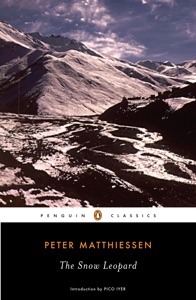
At the time I knew I would be traveling shortly, but I hadn’t yet confessed that to even my closest friends, whom I accompanied on the weekend. (Sorry, guys. If I seemed distracted during our epic foosball tournament, that’s why.) I also knew that Nepal was towards the top of my list of countries to visit. So I struggled against myself to be social through the brief getaway, and not spend the days filling my mind and heart with vicarious visions of what might be to come.
Fortunately, The Snow Leopard made this easy, as it is a tough book. Peter Matthiessen was a practitioner of Zen Buddhism and a skilled meditator, and it’s clear that in writing the book he attempted to bring his formidable inner observational skills to his outer experience, as well. In fact, at times it’s as if he feels compelled to document every single birdcall, boulder, and river ripple he witnesses along his 3-plus-month hike. Almost fatiguingly so! The first 40 pages or so feel like their own uphill climb in this way.
Yet he renders each minute aspect of his journey in such simultaneously spare language and vivid detail that the overpowering Himalayan wastelands and the people he encounters therein are communicated almost as clearly as they might be by the work of a master photojournalist.
The strength of the book, though, is not in his portrayal of the exterior aspects of his experience but instead how he relates to them, and himself, inwardly. For as the book progresses, Matthiessen begins to open up about the man who who has embarked upon on this half-foolhardly mountainous autumn journey.
But unlike the protagonists of many travel books Matthiessen makes one thing clear: he is no hero. For he chronicles his victories and his failings in detail as stark as the landscape. Along with his admirable dedication, commitment, and will, at times he can be petty and vindictive. He is fearful, and regretful. He makes heartbreaking decisions regarding the ones he loves most. (Tears come to my eyes thinking about the story of him and his wife.) And most bracingly, Matthiessen even bears witness to his own privileged, Western perceptions of the utterly impoverished souls of men, women, and children he meets along his way.
In this, though he carries a pack he is no different from anyone else, anywhere else in the world. He is a man, struggling within and without himself to find the light. Though his circumstances and struggles often be extreme, in The Snow Leopard Matthiessen writes masterfully of his sincere search for truth, and the ways in which he finds what he seeks, often in the unlikeliest of places.
Of course, I can relate very much to all of this. Moreso every day. I treasure my experience of reading this book not just for what it is, but for when it arrived in my life, and the many things it had to teach me in ways that I would soon come to understand.
Book arrived: October/November 2015, via a vacation rental library, and Amazon.com.
Book departed: Mid-May 2016. Given to my drinking buddy Jane at Alpes Lima Hostel in Lima, Peru.
(Buy on Amazon)
A Portrait of the Artist As A Young Man by James Joyce

Joyce commands the English language to a degree unparalleled in my experience, at times rending its very seams to render his creative vision. During one particularly memorable scene, a Catholic priest delivers a sermon on hell of such force and clarity that I had to remind myself Joyce created it. By this I mean they are the words of a fictional character crafted by a human being, and not a recorded speech from a real fire-and-brimstone preacher channeling a vision from the beyond. Though I’m no believer in hell, that speech almost scared me into it, which was the artist’s intention.
But Joyce writes of triumph equally well, and this is the main thrust of the story. His description of the semiautobiographical protagonist Stephen Dedalus’ love, longing, and hesitant first surrender to physical passion moved me with its touching intimacy. I could read that scene over and over again, remembering with my body the times I’ve felt myself falling into the invigorating, terrifying bliss of pleasure with another. Dedalus’ later liberation from self- and culturally-imposed constraints to summon his creative essence inspired me; I gratefully shared his wings as he found the will to take flight. And his childhood victory in a difficult scholastic situation made me think of all the times I folded in cowardice from my own youthful challenges, and who I might have been in the years that followed if I hadn’t.
For me, those moments alone are worth reading the book, which does have its weak points. I found the philosophical schoolboy banter particularly taxing, especially because much of the discussions consist of Latin quips and inside jokes familiar only to those who went to a UK/Ireland boarding school around the turn of the 20th century. To get an idea of what that’s like, try to imagine the Hogwarts scenes in “Harry Potter” being conducted half in Latin regarding the subtler points of magical theory, by teenage male characters far less sympathetic.
I also accept those bits as the price of admission for a startling literary experience. The scenes I described above will remain in my memory for a long time not just for their vibrance, but also because I see in them my image reflected.
This, I believe, is the value of great literature: it is a tool I can use to deepen myself and my capacity to feel, and to understand my experience through the eyes of geniuses who have walked among us. As. C.S. Lewis so aptly put it, “We read to know we are not alone.”
As the physical journey I have undertaken is as much a journey of self-expansion as it is global exploration, in this time in my life I am grateful that I have chosen to turn to literature to aid me in those processes.
A Portrait of the Artist As A Young Man was just such an aid, and a marvelous one at that.
Book arrived: Late May 2016 at a large department store in Bogota, Colombia, with my local pal Ana. I don’t know the name of the store, but was so thrilled to find endless shelves of English language books to choose from!
Book departed: June/July 2016, given as a gift to Sue at Hummingbird Retreat in Pisac, Peru. Sue and her husband Paul were my wonderful hosts, counselors, and guides during two powerful medicine journeys with the sacred plant Huachuma, also known as the San Pedro cactus.
(Buy on Amazon)
No Room In The Ark by Alan Moorehead
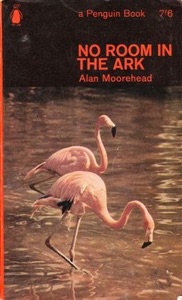
No Room In The Ark is by far one of the most boring books I have ever read, if not the most boring. (I think I might read Game of Thrones: Book 4 again before this one, but please don’t make me choose.) It documents the travels of an an upper-class Australian writer through several African national parks during the 1940’s and 50’s.
I picked it up from the hostel shelf because I had just finished The Snow Leopard, which takes place in Nepal. At the time I foolishly thought, “Hey, I’m going to Africa eventually! Maybe this’ll also be educational for me to read!”
Well, if you imagine there’s no way that anything could possibly blunt the majesty and power of the unspoiled African wilderness, clearly you haven’t encountered the refined gentility of a proper mid-century Australian aristocrat! (And apparently that’s not an oxymoron! *hides from my Aussie friends*)
Over scrub and brush, amidst animals in menagerie, Moorehead barely spills his tea. Nor does his shirt seem to sport a wrinkle or a stain. Oh it’s all quite so fine to see the very tall trees, and the delightful jungle, and the marvelous waterfalls! Oh quite so fine, indeed! And when might we be stopping for lunch?
Since I urge you not to read this unless you’re a completionist when it comes to reading books about Africa, I don’t mind spoiling it for you by sharing there are only two redeeming moments in the whole work, which apparently began life as a series of articles in a UK magazine. One is Moorehead’s near-mystical encounter with mountain gorillas and their alien-yet-eerily-familiar form of consciousness. In this moment, Moorehead seems on the verge of experiencing an actual emotion!
In the other, Moorehead’s riverboat rescues two drowning African tribesmen who are then brought face-to-face with Western technology in the ship’s engine room. They subequently experience the predictable trauma anyone might feel upon journeying forward several centuries’ worth of time in a noisy, violent instant.
Sadly, those two moments are also the briefest in the entire book. Moorehead offers a higher wordcount to lions lazing in the bush than the two most obvious and dramatically-illustrative examples of “encountering the Other”, a transformative experience that I associate with few places in the world, including Africa.
In this, it’s as if Moorehead observes everything from a remove, never allowing himself to be affected by what he experiences. Or at least, he never allows himself to be seen as being affected. This, of course, contrasts wildly with my own philosophy of travel and writing.
Why did I keep reading No Room In the Ark until the bloody end, when I should have spared myself and abandoned it much sooner? Well, I sometimes do this funny thing with books where I feel like redemption waits right around the corner.
My thinking goes: if I read to the final page and even the final sentence, perhaps the author will offer a metaphor or a phrase that will help me understand how he or she feels about all that they’ve written. In that, I hope they will assist me in learning An Actual Thing, if they haven’t already done so. Think of it like praying for a literary “Hail Mary.”
With No Room In The Ark, despite the longest-ever slog, I got a fumble.
Book arrived: Late May 2016, from a book exchange shelf in Alpes Lima Hostel in Lima, Peru, after I completed The Snow Leopard. I broke my own one-book-at-a-time rule and carried it while I was reading Joyce’s Portrait because I just couldn’t even.
Book departed: July 2016, placed on a book-exchange table in Maloka Hostel in Medellín, Colombia. It was gone the next day, so perhaps someone picked it up. I hope they enjoy it more than I did.
(Buy on Amazon) (Or, y’know, don’t)
Wild by Cheryl Strayed
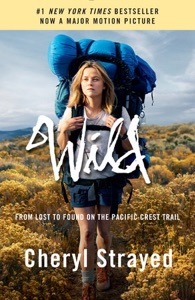 I had previously read Cheryl Strayed’s “Dear Sugar” advice book Tiny Beautiful Things, and practically wrecked the whole thing underlining AND highlighting it for future reference. No seriously, I ruined that poor book with love. That’s how deeply she moved me with her poetic, kind, and sensitive wisdom about life’s toughest topics.
I had previously read Cheryl Strayed’s “Dear Sugar” advice book Tiny Beautiful Things, and practically wrecked the whole thing underlining AND highlighting it for future reference. No seriously, I ruined that poor book with love. That’s how deeply she moved me with her poetic, kind, and sensitive wisdom about life’s toughest topics.
At the time, though, I told myself I would probably not read her acclaimed memoir Wild about her solo backpacking adventure over the Pacific Crest Trail, because it seemed that my own secret-but-treasured version of that dream was diminishing rapidly to impossibility. Then later when this trip became real, once again I said I wouldn’t read her book because the thought of reading such a well-known travel book while traveling seemed just so… cliché.
Well, if I owe No Room In the Ark anything, it’s that once I finished it I was so desperate for a sure-thing that I figured Dear Sugar, Oprah, and Reese Witherspoon (who starred in the movie version) couldn’t all be wrong.
Yet again in my life, I am glad I listened to the advice of smart women.
Wild is a book of crushing emotional power. Cheryl documents the unbearable tragedies of her life and her heartbreaking decisions in response to them with such moving honesty I couldn’t help but be a fan of hers for life. That I intuitively feel comfortable referring to her by her first name should indicate the level of closeness I feel to her, so willingly does she let the reader in to the most personal aspects of her lived experience.
But the beauty of this story is that Strayed clearly does not need cheerleaders. The book does not cry for attention, nor shockingly expose one wounded woman’s sordid and often sexy choices. Though something that has achieved equivalent mainstream success might easily do both.
Instead, Wild is a celebration. It is a celebration of one woman’s fall and redemption; her earned victories and self-imposed tragedies; her youthful folly and burgeoning innate wisdom; her fear and her power; her humorous stumbles as she learns to stand; her pride and newfound humility. And most of all, it is a celebration of her transformation from a frightened, angry, hurt, struggling girl into the triumphant seed of a wise and gifted woman deeply blessed by the love of friends, strangers, and crucially, herself.
In that, Wild is not the story of a woman at all. It is a human story, told through the complex and often magical lenses of the female mind, heart, and body. It so brilliantly illustrates to me all that I appreciate about the human spirit, which is my own spirit, and in so doing also illuminates all that I appreciate in women, as well.
As I said, I feel Cheryl Strayed is my friend. Whether on the surface my journey looks exactly like hers is immaterial. We walk the same road, the only road there is.
Or rather, she has walked. I am walking. And I hope when I cross my final bridge I am able to look back with such remarkable clarity and fluid linguistic candor to light the way for fellow travelers, regardless of their gender.
Cheryl did that for me, and I am forever grateful.
Book arrived: July 8, 2016, at a bookstore in Lima International Airport. At the time, I thought paying airport prices was too high for the book, but that turned out not to be the case at all.
Book departed: Mid-July 2016, given signed as a gift to my dear Claudia, in Medellín, Colombia. Between the book’s arrival and departure, I walked much of the city with it in hand because I couldn’t put it down, earning myself the nickname “bookworm” from my good man Alejo at my beloved Maloka Hostel.
(Buy on Amazon)
Into the Wild by Jon Krakauer
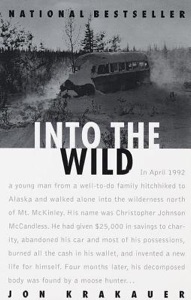 I wrote earlier that the first 5 books I’ve read reflect the theme of “men and women on a journey.” This is obvious with The Snow Leopard, No Room In The Ark, and Wild. It’s a bit less so with Portrait, which to me tells of a boy’s inner journey to manhood. With Into the Wild, this half-serendipitous literary arc appears to have found its conclusion, at least for now.
I wrote earlier that the first 5 books I’ve read reflect the theme of “men and women on a journey.” This is obvious with The Snow Leopard, No Room In The Ark, and Wild. It’s a bit less so with Portrait, which to me tells of a boy’s inner journey to manhood. With Into the Wild, this half-serendipitous literary arc appears to have found its conclusion, at least for now.
Once again, I owe a debt to No Room In the Ark. I found Into the Wild sitting on the aforementioned exchange table at Maloka where I left No Room. I had just purchased Cheryl Strayed’s Wild, and normally wouldn’t have picked up a second book. But rather than risk going book-less once I finished Wild, or risk having to suffer through something like “No Room” out of desperation – have I mentioned I didn’t like it? – I swiped another sure-thing.
Well, if No Room was my punishment for trusting hostel book exchanges, Into the Wild was my reward. Fitting that I exchanged one for the other.
Though I vaguely knew what Into the Wild was about – a young man named Chris McCandless marches boldly into the Alaskan wilderness and (spoiler alert?) dies – I wasn’t prepared to be quite so affected by McCandless’ story. I suspect many of the millions of readers who made Jon Krakauer’s compelling effort of research and writing into a bestseller felt the same.
Because despite myself, I find McCandless aka “Alexander Supertramp” to be an intriguing character. On one hand, I want to mock him, laugh at him, deride him for the foolish, youthful, hubris-filled choices that cost him his life. Or if those choices didn’t actually kill him, at minimum they caused great suffering to the people who cared most about him, including his family.
Yet, I can’t do any of those things. For, on the other hand, in McCandless I also see qualities that are undeniably brave, bold, and noble. Is he not driven by some of the same motivations that move me and others to hit the road: that active desire, through struggle and stress and deprivation, to touch something raw and real inside? Is not my goal also to strip away what is false, until I can discover what is essential? Isn’t my journey also risky, both with my health and safety, and others’ hearts? And isn’t he a heck of a lot more courageous than I am for cutting much more deeply in his sacrifices, for longer than I, and over far more treacherous terrain?
In that, can Chris not be forgiven for being in his 20’s, feeling himself immortal, and being more willing to test and verify that proposition than almost anybody else?
Yes, he made dumb decisions. Yes, he probably had one screw ever so slightly loose. But Cheryl Strayed speaks openly about her bad choices, many of which were far more obviously dangerous and consequential than McCandless’. Peter Matthiessen trekked through the third-world Himalayas in an unusually-snowy November, risking his life and his family’s well-being in the hopes of achieving some small amount of enlightenment in a remote monastery. Surely that is its own form of madness?
Plus, McCandless traveled for longer than Matthiessen and Strayed combined, and made do with far less. Is the only difference between the three that two survived and one didn’t?
These questions have no easy answers, and Krakauer makes no effort to provide them. That imbues his book with haunting power, that we can never know the full answers to McCandless unusual life and lonely death. He will forever remain an enigma and a tragically educational puzzle for all those driven into their own wilds to touch the immortal within and without.
Maybe Christoper McCandless reached too far, and grabbed too greedily. Maybe in that he earns a bit of his blame. Or maybe he was simply unlucky. But maybe for a moment, he also grasped Something. Maybe.
In the closing sentence of the book, Krakauer offers the sort of literary “Hail Mary” that I love. He describes a single, simple image that encapsulates with its final word all that he wrote, all that I read, and all that we shared in the experience of one young man’s story. It’s an image that remains in my mind to this day, and will leave me thinking and feeling about Chris McCandless’ life and death for a long time to come.
So today I honor and mourn McCandless. I applaud and pity him. I cheer and weep for him. The beauty of Into the Wild is that the book, and Krakauer, do the same, providing another example of finding the best and most tragic in humanity, in the journey.
Book Arrived: July 2016, at a book exchange table at Maloka Hostel, Medellin.
Book Departed: August 2016, at a book exchange table at El Genoves Hostel, Cartagena, Colombia.
(Buy on Amazon)
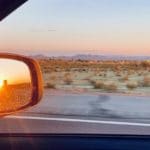


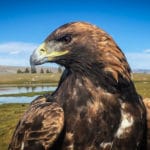
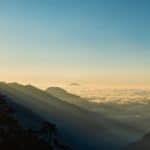
6 Comments